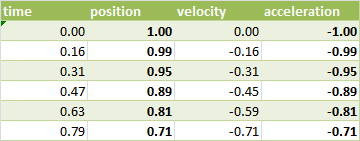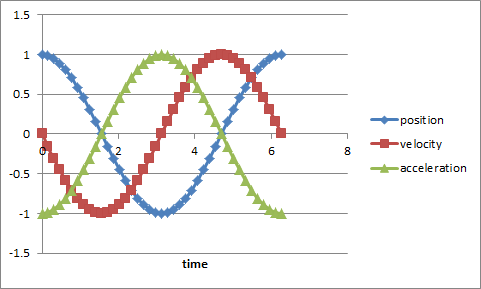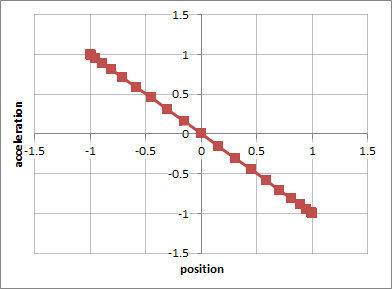Question #7261e
1 Answer
The slope of the line representing the acceleration as a function of the position is the negative ratio of the spring constant to the mass of the object.
Explanation:
The acceleration of an object is caused by a force applied to it. In a spring-mass system, the force is applied by the spring and is proportional to the distance from the rest position. So the acceleration as a function of position must be related to the spring constant. Let's find out by writing out some of the relevant equations. First, Newton's second law:
Next Hooke's law for the spring, remembering that the force opposes the displacement,
Combining these two we have:
If we think of this as the equation of a line then the slope is just the factor in front of
Therefore, the slope of the line representing the acceleration as a function of the position is the negative ratio of the spring constant to the mass of the object.
Bonus: A quick test of this is to plot the relevant parameters vs. time where for simplicity, let's let the amplitude,
then
We can make a table of the position, velocity and acceleration vs time (shown in part here):

And then graph all of these vs. time:

finally, we can select the position and acceleration columns and plot them on a graph:

As we expected, this is a straight line with a negative slope. Notice that the points are not evenly spaced? It's because this is a parametric graph - each point represents a point in time where the points in time are evenly spaced. Since the mass is moving more quickly near the rest position,

